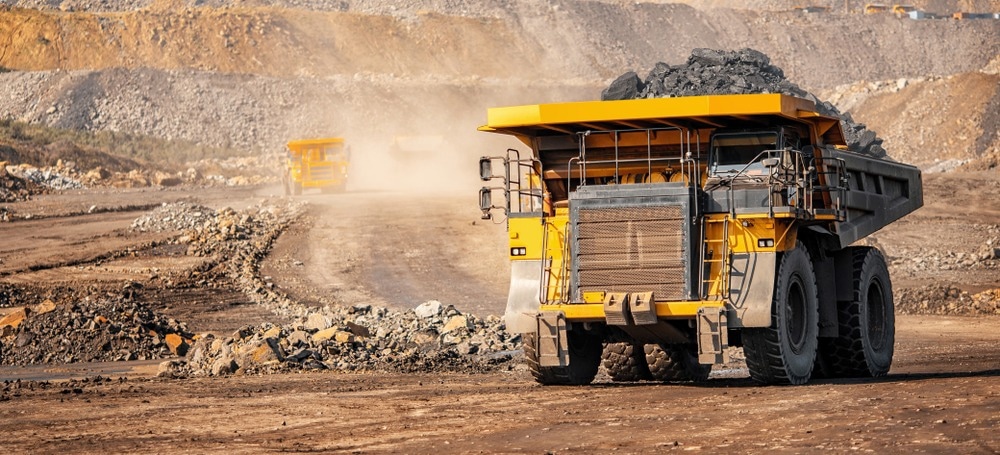Ensuring industrial safety is a priority for every mining company. Timely control, only possible with high-tech collision avoidance systems, helps achieve the proper safety level and prevent accidents.

Image Credit: Parilov/Shutterstock.com
Growing Demand for Collision Avoidance Systems in Mining Industry
The ever-increasing demand for natural resources is driving the rapid expansion of mining. However, mining is connected with various risks and hazards.
Most risks arise from miners’ proximity to vehicles and working in confined situations. As a result, in the last few years, mining companies have prioritized investments in collision avoidance technology to reduce these hazards.
According to GlobalData’s latest mine-site survey, 49% of mines surveyed are expected to either invest in the technology for the first time or increase their investment in the next two years, while 47% have already made a moderate investment in collision avoidance technology. In contrast, just 36% of respondents anticipated investing in the technology in 2020.
This survey illustrates the importance of the technology given by miners and mining authorities to reduce collision-related injuries and fatalities.
Latest Developments in Collision Avoidance Systems
Collision avoidance systems in mines involve tracking sensors, tags, and vehicles to trigger collision alerts, create safe zones, and provide mining operators with proximity awareness without interfering with their work.
The latest technology has made these systems more effective, easier to access, and less intrusive for new workers.
PROX-EYE proximity systems
Chilean technology company Samtech signed an agreement with Canadian firm Correct-AI to commercially distribute its PROX-EYE proximity systems. This technology combines artificial intelligence software with high-definition (HD) cameras to alert against potential accidents and operational hazards.
PROX-EYE features LiDAR sensors, enabling it to respond in darkness, fog, dust, and direct light.
Matrix rolls out OmniPro
The OmniPro is an excellent option for a miner who is new to collision avoidance systems, since it requires no pre-installation, is simple to implement, and is effective.
OmniPro uses artificial visual intelligence to identify and alert the operator of pedestrians and other preselected items, such as automobiles and stop signs, in the projected route of a mobile equipment unit. The technology is intended for small to medium-sized mobile equipment.
It is a stand-alone warning system and does not require equipment tags or tracking devices. Instead, with the help of dual-camera systems, the system automatically adjusts to monitor the vehicle’s direction of travel while capturing surroundings with time-stamped pictures.
Torsa LIDAR 3D technology
TORSA’s high-precision anti-collision system for auxiliary vehicles and trucks uses LiDAR 3D technology to precisely analyze its surrounding. Due to technology fusion and environmental analysis precision, the system adjusts its security levels according to the situation.
3D LiDAR enables this system to identify metallic and even non-metallic obstacles, such as mining fronts, rocks, and berms, without a tag or an identifier.
Hexagon Mining’s CAS 10
The Hexagon’s newest CAS 10 (version 10 of the HxGN MineProtect collision avoidance system) has a smart antenna and in-cab display. The smart antenna combines radio frequency, GPS, LTE, and Wi-Fi in a single device. The display combines data from personnel proximity, radars, and collision avoidance systems.
HxGN MineProtect CAS is integrated with a web-based analytics and reporting platform that integrates collision avoidance system data with operator alertness system information. This facilitates the monitoring and control of critical-risk trends and events through the real-time display of all CAS components, including identifying collision and high-risk areas, the analysis of overspeeding patterns, and the delivery of daily safety reports.
Wabtec’s Digital CAS
The next-generation digital mine collision avoidance system from Wabtec is a significant advancement in sensing accuracy, user experience, and EMESRT Levels 9 vehicle controls.
The company is trying to implement this technology to the vehicle with any protocol, facilitating interoperability between manual and autonomous devices.
Digital Innovation and Collision Avoidance Systems
Mining technology has transformed significantly since collision avoidance systems were introduced in the mining industry.
Industry 4.0 is bringing digitization and automation to levels previously unimaginable. This digitization is also influencing collision avoidance systems. Companies have been able to invest extensively in software-based collision avoidance systems due to the rapid development of digital technology.
In particular, collision avoidance systems have benefited from the following advancements:
- Satellite positioning improves collision algorithms
- LiDAR to identify and avoid obstacles with high-level accuracy
- Software-based systems for greater scalability and customization to meet specific customer requirements
- Intelligent vision systems that detect people, cars, objects, and hazards.
- Innovative fatigue-detecting solutions
All these advancements help collision avoidance systems achieve their primary goal of reducing mining worker injuries. However, perhaps the most crucial role collision avoidance system will play in terms of safety in the future is as a technology that enables increased levels of autonomous and automated mining.
References and Further Reading
Global Data. (2022). Collision Avoidance Systems a Key Focus for Investment in the Next Two Years. [Online]. Mining Technology. Available at: https://www.mining-technology.com/comment/collision-avoidance-systems/ (Accessed on November 24 2022).
Kaelo, O. J., Madyira, D. M., & Nyemba, W. R. Collision Avoidance Technology: The use of Fourth Industrial Revolution (4IR) for Safe Mining. IEOM Society International. Available at: http://ieomsociety.org/harare2020/papers/549.pdf
Morton, J. (2022). Collision Avoidance Simplifies. [Online]. Coal Age. Available at: https://www.coalage.com/features/collision-avoidance-simplifies/ (Accessed on November 24 2022).
Qian, M., Zhao, K., Li, B., Gong, H., & Seneviratne, A. (2022). Survey of Collision Avoidance Systems for Underground Mines: Sensing Protocols. Sensors, 22(19), 7400. https://doi.org/10.3390/s22197400
Rowland, J. (2022). Taking Control: Collision Avoidance in Surface Mining. [Online]. North American Mining. Available at: https://northamericanmining.com/index.php/2022/10/04/taking-control-collision-avoidance-in-surface-mining/ (Accessed on November 24 2022).
SITECH. (2022). Correct-AI and SITECH Solutions Sign Exclusive Distribution Agreement for PROX-EYE Systems. [Online]. SITECH. Available at: https://www.sitechsolutions.com.au/2022/03/15/correct-ai-and-sitech-solutions-sign-exclusive-distribution-agreement-for-prox-eye-systems/ (Accessed on November 24 2022).
Disclaimer: The views expressed here are those of the author expressed in their private capacity and do not necessarily represent the views of AZoM.com Limited T/A AZoNetwork the owner and operator of this website. This disclaimer forms part of the Terms and conditions of use of this website.